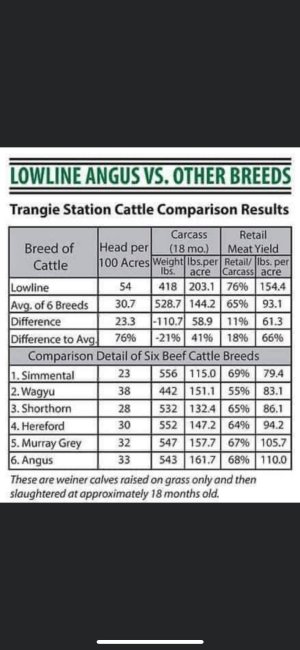That chart is ancient. Trangie Station "developed" the Lowline (no longer a breed - now Aberdine Angus) back in 1929 to 1964. Think about what it says. Look at the "breeds" listed and the carcass weight at 18 months old.
Brute said "Pounds per acres are the same no matter the size of the cow. You may run more head with smaller cattle or less head with larger cattle but the pounds are the same."
Think about that. Very accurate.
Also, every animal takes just as long as far as labor - every cow has to be handled, vaccinated, calved, get bred, record keeping. Cow size does not cut down on labor/time. Also, most vaccines are by head - not weight. Deworming is about the only thing we do that is based on weight - and antibiotics.
It has been proven that maintenance is not linear. An 1800# cow does not eat twice as much as a 900# cow. (extreme example, but accurate)
Mainly, your COWS should be sized for your land. Little cows on my land would be rolly polly toads. Total waste of good land. I have BIG cows. They are not supplemented in any way - strictly grass and hay. All my hay is put up on my land along with rotational grazing. But, on the other hand, you would not want my cows on poor growing land.

